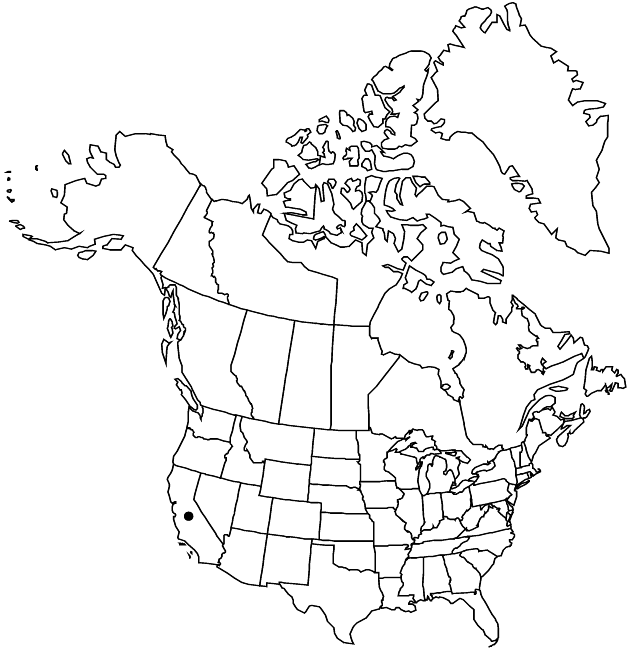Layia munzii
Madroño 3: 16. 1935.
Plants 6–50 cm (self-incompatible); glandular, not strongly scented. Stems not purple-streaked. Leaf-blades oblanceolate to linear, 5–60 mm, margins (basal leaves) lobed. Involucres hemispheric to ± urceolate, 5–9 × 5–10+ mm. Phyllaries 6–15, apices shorter or longer than folded bases. Paleae in 1 series between ray and disc-florets. Ray-florets 6–15; laminae proximally yellow, distally white, 3–14 mm. Disc-florets 16–100+; corollas 3.5–5 mm; anthers ± dark purple. Ray cypselae glabrous or sparsely hairy. Disc pappi of 9–12 whitish, lance-linear, attenuate, ± equal scales 2–3.5 mm, each ± scabrous, not plumose, not adaxially woolly (bases sparsely setose). 2n = 14.
Phenology: Flowering Mar–Apr.
Habitat: Open, ± alkaline flats, depressions, flood plains, in grasslands, saltbush scrub, on clayey soils
Elevation: 30–800 m
Discussion
Of conservation concern.
Layia munzii occurs in the southern San Joaquin Valley and South Inner Coast Ranges. Populations are evident only in some wet years, when dense stands may be found, sometimes near L. platyglossa (natural hybrids have not been reported; artificial hybrids have reduced fertility; J. Clausen 1951).
Selected References
None.
